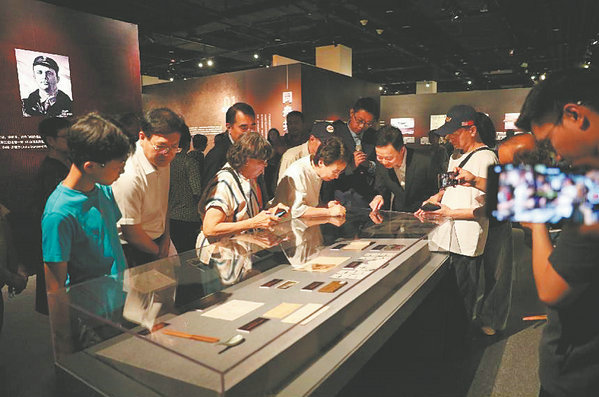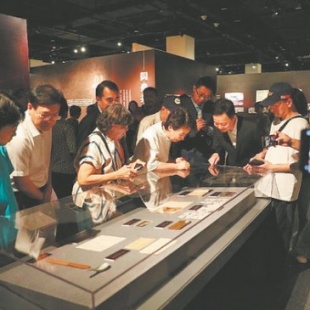Exhibition pays homage to Flying Tigers' heroism


Eighty years ago, after 14 years of arduous struggle, the Chinese people achieved a great victory in the War of Resistance Against Japanese Aggression (1931-45), which also marked the victory of the World Anti-Fascist War. During this war, the Flying Tigers crossed the Pacific to support the Chinese people in their resistance against Japanese forces.
To commemorate the 80th anniversary of the victory of the war of resistance and the World Anti-Fascist War, the special exhibition The Sound of Propellers Cutting Through Clouds: Memories of the Flying Tigers' War of Resistance and the Vigil for Peace recently opened at the Overseas Chinese History Museum of China in Beijing, which will run through Sept 7.
The Flying Tigers is the name given to the American Volunteer Group that aided China during the war of resistance. This volunteer air force from the United States dealt major blows to the Japanese air force and served as an important aerial power in resisting the Japanese military. The Flying Tigers also flew over the Himalayas to establish the "Hump" route, almost the only international supply line available to China after the Japanese occupied Myanmar.
There were over 2,000 members in the Flying Tigers, about 90 percent of whom were Chinese, with most tracing their ancestry to the Guangdong province.
At the opening ceremony, Pedro Chan, a Chinese-American collector and director of the American Flying Tigers Institute, shared his personal story and motivation behind collecting Flying Tigers artifacts.
Chan's ancestral home is in Panyu, Guangdong. He was born in 1946 in Macao, China, into a family of traditional Chinese medicine practitioners, and later went to the US for study and work. With his exceptional medical skills, he established 11 clinics in Los Angeles.
Since 2007, Chan has been collecting and donating Flying Tigers artifacts. To date, he has donated approximately 20,000 items related to the Flying Tigers, the war of resistance, and overseas Chinese.
These items have been donated to 39 cultural institutions and museums in China, including the National Library of China, the National Museum of China, and the Overseas Chinese History Museum of China, as well as to 14 institutions in the US, such as the Pearl Harbor Aviation Museum, the Chennault Aviation and Military Museum, and the Chinese Historical Society of Southern California.
Among the 158 sets of Flying Tigers artifacts he donated to the National Museum of China, there are items such as navigation kits used by Flying Tigers members, service records, aviation medals, flight badges, and blood chits printed with text in seven languages.
"These Flying Tigers artifacts bear witness to the interaction and cooperation between China and the US during World War II and help promote the friendly development of Sino-American relations," he said.
The exhibition is divided into seven sections, including Background of the War of Resistance Against Japanese Aggression, Hope amid Adversity, Battles in the Sky, Stories of War and Peace, and Flying Tigers Sites in Yunnan.
It features over 100 items or sets of Flying Tigers-related artifacts drawn from the collections of the Overseas Chinese History Museum of China, and Kunming Museum in Yunnan province.
"The spirit of the Flying Tigers is not only a historical symbol but also an important spiritual bond for the development of Sino-US relations. It represents collaboration across borders and cultures, highlighting humanity's shared pursuit of peace and justice," said Ning Yi, deputy director of the Overseas Chinese History Museum of China, in his speech.
"We are hosting this special exhibition to help more people understand the history of the Flying Tigers and appreciate the essence of their spirit, allowing this spiritual legacy to take root and flourish in the hearts of the younger generation.
"By telling the story of the Flying Tigers, we aim to enhance the understanding of each other's history and culture among the youths of China and the US, fostering their aspirations for peace and friendship, and injecting vitality into the long-term development of Sino-US relations," he said.




































